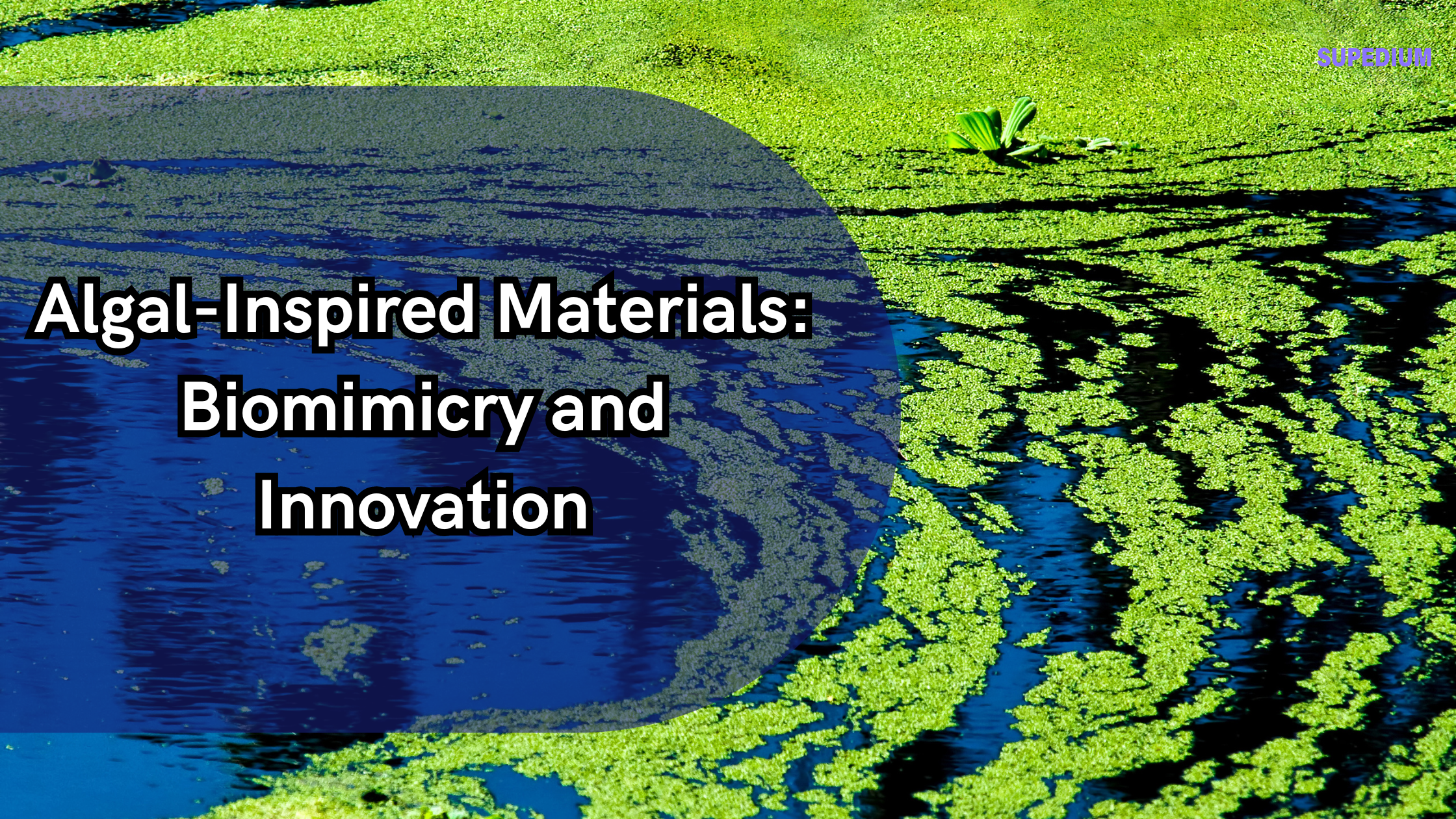Table of Contents
![]()
Introduction
Biomimicry is the practice of drawing inspiration from nature to solve human challenges. This approach has led to significant innovations across various fields by mimicking natural processes, structures, and materials. One area where biomimicry is showing remarkable promise is in the development of algal-inspired materials. Algae, a diverse group of photosynthetic organisms, offer a wealth of unique properties that can be harnessed for creating sustainable and innovative materials. This article explores the biology of algae, their inspiring properties, and the various applications of algal-inspired materials.
Algal Biology and Properties
Basic Characteristics of Algae
Algae are a diverse group of photosynthetic organisms found in various aquatic environments. They range from microscopic phytoplankton to large macroalgae like kelp. Algae can be classified into several groups, including green algae, brown algae, and red algae, each with distinct characteristics. Algae play crucial roles in ecosystems, such as producing oxygen and forming the base of aquatic food webs.
Unique Properties of Algae Relevant to Materials
Algae possess several unique properties that make them attractive for material innovation. Their rapid growth rates and ability to thrive in diverse conditions make them a sustainable resource. Biochemically, algae produce a variety of compounds, including polysaccharides like alginate, agar, and carrageenan, which have valuable applications in material science. Structurally, algae have cell walls that can form hydrogels, providing a basis for creating flexible and functional materials.
Applications of Algal-Inspired Materials
Environmental Applications
- Biodegradable Plastics
Algal-based plastics are a promising alternative to traditional petroleum-based plastics. Materials such as alginate and agar can be processed into biodegradable polymers that break down more quickly in the environment. This innovation addresses the global challenge of plastic waste, offering a more sustainable option for packaging and other applications.
- Biofuels
Algae are a significant source of biofuels, including bioethanol and biodiesel. Unlike traditional biofuel sources, algae do not require arable land and can be cultivated in various environments, including wastewater. Algae have high lipid content, which can be converted into biodiesel, and carbohydrates that can be fermented into bioethanol, providing a renewable energy source with lower environmental impact.
- Water Purification
Algae can also be used in water purification technologies. Algal-based filters and absorbents leverage the algae’s natural ability to absorb pollutants and contaminants from water. For instance, algae can remove heavy metals and organic pollutants through adsorption and bioaccumulation, contributing to cleaner water and reducing the need for chemical treatments.
Industrial and Technological Applications
- Coatings and Films
Algal-derived coatings and films are gaining attention for their functional properties. Algal polysaccharides can be used to create coatings with antimicrobial and antifungal properties, suitable for various surfaces. These coatings can be applied to medical devices, food packaging, and other products to extend shelf life and enhance performance.
- Construction Materials
In the construction industry, algal-based materials offer innovative solutions. Algae can be used to create concrete that has improved thermal insulation properties and reduced carbon footprint. Additionally, algal-derived insulation materials offer sustainable alternatives to traditional options, contributing to greener building practices.
- Textiles
The textile industry is exploring algal fibers and dyes as eco-friendly alternatives to conventional materials. Algal-based fibers can be spun into fabrics that are biodegradable and have unique properties, such as antimicrobial effects. Algal dyes offer vibrant colors derived from natural sources, reducing reliance on synthetic dyes that can be harmful to the environment.
Health and Biomedical Applications
- Drug Delivery Systems
Algal polysaccharides, such as alginate, are being researched for their potential in drug delivery systems. These materials can form gels that encapsulate drugs and release them in a controlled manner. This capability is valuable for targeting specific areas in the body and improving the effectiveness of treatments.
- Wound Healing
Algal-based wound dressings are being developed for their beneficial properties in promoting healing. Alginate-based dressings can create a moist environment conducive to wound healing and facilitate the absorption of exudates. Research has shown that these materials can enhance healing processes and reduce the risk of infection.
- Nutraceuticals
Algae are a rich source of essential nutrients, including vitamins, minerals, and antioxidants. Algal-derived supplements, such as spirulina and chlorella, offer health benefits and are used to support overall wellness. The market for algal nutraceuticals is growing, driven by increasing consumer awareness of the benefits of natural supplements.
Research and Development
Current Research Trends
Research in algal-inspired materials is advancing rapidly, with studies focusing on improving the efficiency and scalability of algal cultivation and processing. Recent breakthroughs include enhanced methods for extracting valuable compounds from algae and developing new algal-based materials with advanced properties.
Challenges and Limitations
Despite the promising potential, several challenges remain in the field of algal-inspired materials. Technical issues, such as optimizing algal growth conditions and processing techniques, need to be addressed. Economic challenges include the cost of scaling up production and achieving commercial viability. Researchers are working to overcome these obstacles to make algal-based materials more accessible and cost-effective.
Future Directions
Future research in algal-inspired materials will likely focus on interdisciplinary approaches, combining insights from biology, material science, and engineering. Innovations may include novel applications of algal materials in emerging technologies and further advancements in sustainable practices. Collaboration between researchers, industry stakeholders, and policymakers will be crucial in driving progress and realizing the full potential of algal-inspired materials.
Case Studies
Notable Innovations and Products
Several successful examples of algal-inspired materials have emerged, showcasing their practical applications and impact. For instance, companies have developed algal-based biodegradable packaging that offers a sustainable alternative to traditional plastics. Other innovations include algal-derived biofuels and water purification systems that demonstrate the versatility and effectiveness of these materials.
Lessons Learned
Case studies provide valuable insights into the development and commercialization of algal-inspired materials. Key lessons include the importance of addressing technical and economic challenges, as well as the need for effective collaboration between researchers and industry partners. These experiences inform future research and help refine approaches to material innovation.
Conclusion
Algal-inspired materials represent a fascinating intersection of biomimicry and innovation, offering sustainable solutions to a range of environmental, industrial, and health challenges. By harnessing the unique properties of algae, researchers and companies are developing new materials that contribute to a greener and more sustainable future. As the field continues to evolve, algal-inspired materials are poised to play a significant role in addressing some of the most pressing issues of our time.
Share This





Be the first to comment